The official numbers are out and as expected, they show a grim picture of the auto industry’s performance in the first 6 months of this year. For the first half (H1) of 2019, the Total Industry Volume (TIV) was almost 300,000 units but this year, it fell by 41.1% to 174,675 units.
As the chart shows, the unprecedented contraction started in March when the Movement Control Order (MCO) was implemented in the middle of the month and the slide continued through April with a 99.7% drop compared to April 2019 as no business could be done. By May, the situation shows signs of improvement that the government was willing to relax the MCO and allowed many businesses to resume operations, with strict Standard Operating Procedures (SOPs) to be observed.
The resumption began with service centres and factories and then showrooms were also allowed to open for business. While large numbers of customers didn’t visit showrooms, many companies began to promote their online services for booking which at least started the purchasing process without having to physically be in contact with the customer.
May saw a climb in numbers to 23,960 units and then came some good news that was part of the government’s plan to help industries recover: the sales tax of 10% would be exempted from June 15 to December 31, 2020. For locally-assembled models, which make up the dominant share of new vehicles sold, the exemption would be 100% and for imported CBU models, it would be 50%. It was hoped that the lowering of prices would encourage people to buy new vehicles.
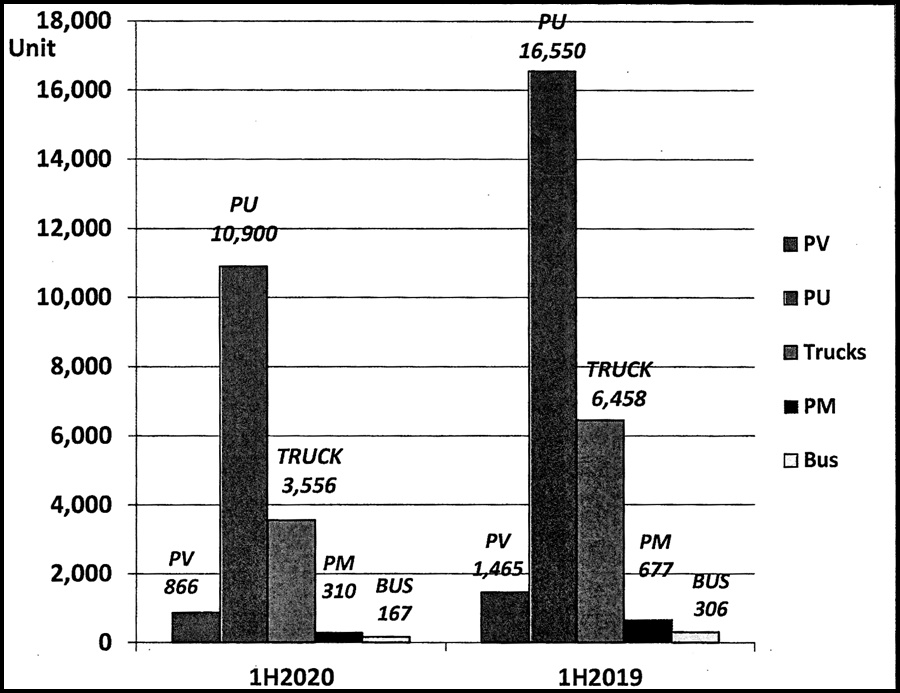
Even with just two weeks in June when the prices were reduced (although Perodua started adjusting prices downwards a bit earlier), sales shot up by 91.7% from the May TIV to 44,695 units – even higher than the 42,526 units reported in June 2019.
2020 forecast revised twice
When the MCO was in force and its impact on the industry was clear, the MAA revised its forecast for the year downwards to 400,000 units. Then, when the government announced the exemption of sales tax, the forecast was revised again as it was felt that the auto industry-specific incentive, along with other economic incentives, would help to boost sales. The revision saw the TIV for 2020 going up to 470,000 units.
This means that, for the second half of the year, the TIV would have to be 295,325 units or almost 50,000 units each month. That may appear a bit ambitious but last year, 5 of the six months in the second half of the year saw volumes over 50,000 units. However, consumers were uncertain about the economy then, not their lives; it is different this year with concerns about COVID-19. Many people have lost their jobs (the unemployment rate increased to 5.3% in May from 3.3% in February) or had big pay cuts and buying a new vehicle might be one of the last things on their mind.
Used car business booming
The used car industry is experiencing a boom, though. According to MAA President, Datuk Aishah Ahmad, apart from wanting to spend less on a vehicle purchase (or not at all), many people may be reluctant to use public transport to avoid risks of infection and therefore buy a low-priced used car for their transport needs.
Obviously, the auto industry would like more assistance from the government to help in its recovery but understandably, the government has to help other industries as well. The new National Automotive Policy (NAP) which was announced at the beginning of the year has yet to be implemented and the MAA will soon be meeting MITI to get more clarification on the policy as well as to offer suggestions on how the industry can be helped in its recovery. The MAA President thinks that the policy is unlikely to be changed despite the challenging economic conditions.
Other ASEAN markets
As always, the MAA press conference also included an overview of how other ASEAN markets are doing and as would be expected, there was a big drop in the total regional sales and production volumes by 42% and 39%, respectively. Only Myanmar did not have a decline in sales (in fact, its sales increased by 5%) during the first 6 months of 2020 but that market is small – less than 8,000 units over a 5-month period. Compared to the 5-month period in 2019, production in Thailand and Indonesia, the two big markets which also export substantial numbers of vehicles, dropped by 40% and 33%, respectively, while Malaysian production was 51% down.
After 2020
The MAA’s forecast for the next few years is conservative and as the TIV for 2020 is going to be lower than normal – the last time it was around 470,000 units was in the early 2000s – 2021 is expected to see a 17% increase to 550,000 units. However, after that, the TIV may slow down and a 9.1% increase to 600,000 units is forecast for 2012. Thereafter, it may be just 2% a year till the end of 2024.
At this time, it’s hard for anyone to say with certainty how things will be. As the International Monetary Fund (IMF) has said, ‘the trajectory of the pandemic remains hard to predict’. Unlike economic recessions where business drops but when things get better, it picks up and continues to grow. This pandemic situation is like a world war, with devastation including loss of lives as well, that impacts virtually everything and with the economies so interconnected, every country will be affected.
In the post COVID-19 world (we’re not there yet), close contact is going to be avoided or discouraged to minimise spread of coronavirus infection. Many industries will have to change the way they do things whether within their organisations and for those which deal with the outside world, interaction with customers and clients.
The auto industry, being one of those that has much interaction with customers, is undergoing change with processes that promote social distancing and contactless transactions. Greater attention is being paid to hygiene and the health of staff.
For carmakers like Lamborghini, which has long maintained a personal touch with its customers, there is also a need to review the interactive activities. In particular, the Ad Personam customisation program now has to take into consideration customers who may not wish to travel (or cannot) to the specialist department in Italy.
For such customers, there is now a new Ad Personam virtual studio offering consultation sessions to customers worldwide who want their new Lamborghini to be personalized. From this month, these customers can pre-book an initial consultation of around 2 hours via their dealership, either joining their sales specialist at the showroom or from another location, for their dedicated session with Lamborghini’s specialists.
They will be able to view extensive Ad Personam options on display during the video call to the Ad Personam studio. With the model present, design proposals and configuration suggestions from the Ad Personam team can be discussed using smartphones for walkarounds and to see close-up details. The virtual consultation is followed up with full proposals sent to the client, including renderings and even material samples.
“Lamborghini is always thinking dynamically about the best solutions to challenges, and our new virtual Ad Personam studio consultations have been carefully devised to support clients who, in times where we are all cautious about international travel, still want the special, one-to-one experience of creating an entirely personalized car,” said Giovanni Perosino, Chief Commercial Officer of Automobili Lamborghini.
“We still look forward to welcoming clients to Sant’ Agata Bolognese in the future but we expect more than 150 Ad Personam consultations to take place virtually within this year, and continuing as an option for the future. With the support of our dealers worldwide, who also have significant personalization experience and of course, samples and materials in their own dealerships, we have the exciting opportunity in an increasingly digital age to create one-off Lamborghini models virtually,” he explained.
To celebrate the new Ad Personam facility, Lamborghini announces the Aventador SVJ Xago special edition. Only 10 units are available to those customers specifying their Aventador SVJ virtually. Inspired by the hexagon cloud shapes at the North Pole on the planet Saturn and the strength of the hexagon in nature, the Xago celebrates the iconic ‘hexagonita’ theme in Lamborghini design.
The exterior of the Lamborghini Aventador SVJ Xago edition features a specially-created fading hexagonal silver effect, with a unique Ad Personam contrast colour livery for each car and gloss black Nireo Ad Personam rims.
The interior features an exclusive seat pattern with hexagonita theme, and special contrast colour matching the exterior. Each of the Aventador SVJ Xago models will be identified by a numbered plate.
Lamborghini started its Ad Personam program in 2013 and opened its Ad Personam studio in 2016. Today, more than 50% of its cars are given additional attention by Ad Personam specialists after leaving the factory. This percentage has tripled over the last 3 years, with customers in the USA, Asia and UK being the largest number using the personalisation service.
Pearl Capsule gives Lamborghini Urus buyers additional colour choices
The COVID-19 pandemic has brought on changes to many different aspects of life to fight the coronavirus. One of the important measures is the reduce the spread of bacteria and viruses, which can be on the many surfaces we come in contact with. Researchers are also beginning to find that the viruses can float in the air for a while too.
For the auto industry, urgent work has been carried out to develop systems and switch to materials that can help in the fight against bacteria and viruses. The latest development is from Jaguar Land Rover which, together with the University of Cambridge, has a new contactless touchscreen technology. This will also help keep drivers’ eyes on the road, improving motoring safety.
The patented technology, known as ‛predictive touch’, uses artificial intelligence and sensors to predict a user’s intended target on the touchscreen – whether that’s satellite navigation, temperature controls or entertainment settings – without actually touching a button.
The pioneering system, developed with engineers at the University of Cambridge, is part of Jaguar Land Rover’s ‘Destination Zero’ vision – a desire to make its vehicles safer and the environment cleaner and healthier.
In the ‘new normal’ once lockdowns around the world are lifted, a greater emphasis will be placed on safe, clean mobility where personal space and hygiene will carry premiums. Jaguar Land Rover vehicles are already designed to help improve passenger wellbeing, with innovations including a Driver Condition Monitor, engine noise cancellation and cabin air ionisation with PM2.5 filtration to capture ultrafine particles and allergens.
New technology like predictive touch is another step forward in addressing the wider landscape of mobility, from how customers connect with mobility services, to the infrastructure required to enable fully integrated, autonomous vehicles in cities.
Lab tests and on-road trials have shown the predictive touch technology could reduce a driver’s touchscreen interaction effort and time by up to 50%. At the same time, this will limit the spread of bacteria and viruses from the touchscreen surface to fingers.
Uneven or poor road surfaces can often cause vibrations that make it difficult to select the correct button on a touchscreen. This means drivers must take their attention away from the road, increasing the risk of an accident. The technology uses artificial intelligence to determine the item the user intends to select on the screen early in the pointing task, speeding up the interaction.
A gesture tracker uses vision-based or radio frequency-based sensors, which are increasingly common in consumer electronics, to combine contextual information such as user profile, interface design and environmental conditions with data available from other sensors, such as an eye-gaze tracker, to infer the user’s intent in real time.
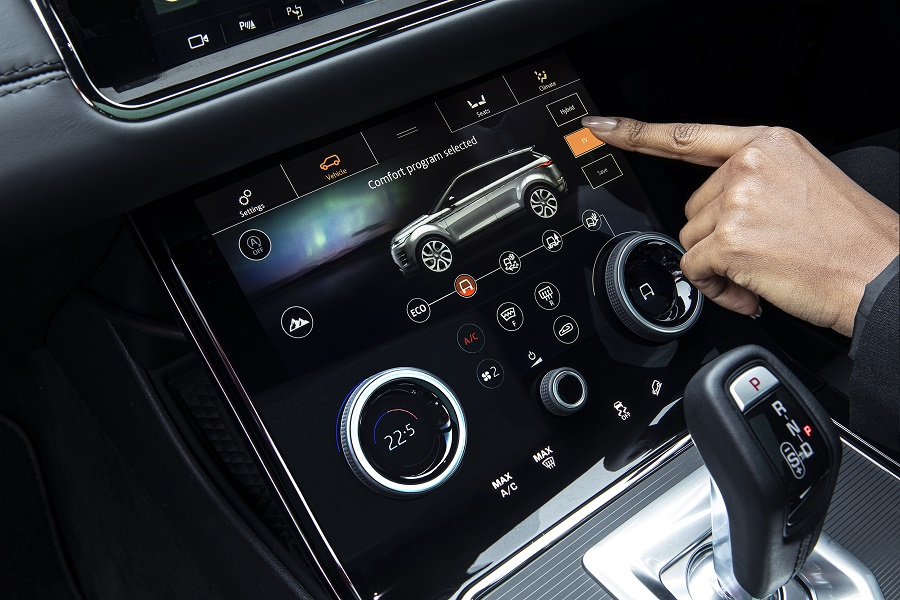
This software-based solution for contactless interactions has reached high technology readiness levels. It can be seamlessly integrated into existing touchscreens and interactive displays, so long as the correct sensory data is available to support the machine learning algorithm. This means that existing systems do not need to change, keeping costs down.
“As countries around the world exit lockdown, we notice how many everyday consumer transactions are conducted using touchscreens: railway or cinema tickets, ATMs, airport check-ins and supermarket self-service checkouts, as well as many industrial and manufacturing applications. Predictive touch technology eliminates the need to touch an interactive display and could therefore reduce the risk of spreading bacteria or viruses on surfaces,” said Lee Skrypchuk, Human Machine Interface Technical Specialist at Jaguar Land Rover.
“The technology also offers us the chance to make vehicles safer by reducing the cognitive load on drivers and increasing the amount of time they can spend focused on the road ahead. This is a key part of our Destination Zero journey.”
New Land Rover Defender gets advanced connectivity with world-first dual e-SIM hardware
There’s something about wood which adds classiness to a car’s interior. Perhaps it brings to mind the days when wood was the primary material for trim, instead of plastic and metal, and it was handcrafted rather than moulded. Wood trim is a mark of luxury and therefore a must for the prestigious brands.
So far, wood panels have had flat surfaces, polished or natural but now Bentley is offering a ground-breaking new Three-Dimensional Wood trim with the all-new Flying Spur. Used for the rear door trim, Three-Dimensional Wood is a world-first in the automotive sector.
Available from Bentley Mulliner Collections
The trim has a striking, diamond-shaped pattern enhanced with a three-dimensional surface finish machined directly into the wood. The new option is one of the unique veneer choices from the Bentley Mulliner Collections and forms a contemporary luxury design statement, bringing tactility to the natural beauty of wood.
Each rear door and quarter panel is handcrafted from a single block of sustainable American Walnut or American Cherry timber, in a harmonious marriage of traditional skills and modern technology. The Three-Dimensional Wood parts are not made using veneers, as is typically applied to the fascia and waist rails. Instead, each is created from a single block of timber.
The concept for 3D-machined wood was first shown in Bentley’s EXP 10 Speed 6 concept car at the Geneva Motor Show in 2015. The distinctive feature was inspired by the form of leather used for the diamond-quilted areas in Bentley’s Mulliner Driving Specification interior suite.
18 months of development
Three-Dimensional Wood required 18 months of production development by expert technical craftsmen before Bentley Mulliner could then bring the complex concept to reality. To achieve the three-dimensional surface, skilled operators carve the wood with a multi-axis routing machine to a tolerance of 0.1 mm, less than the thickness of a human hair, hand-finishing the cuts for perfect results. An open-pore lacquer is then applied, allowing the true colour and texture of the wood to shine through for a refined, natural appearance.
The back or ‘B surface’ of the log is machined to match a die-cast aluminium door panel template. The timber is then bonded to the template before the assembly is placed back into the machine and the front or ‘A surface’ is cut into its three-dimensional form.
Highest quality sustainable timbers
Both American Walnut and American Cherry timber are sustainably sourced from North American hardwood forests. Bentley selects only the very finest timbers, with no knots or resin inclusions through the depth of the wood. Only these logs offer an attractive grain and smooth finish, plus a natural texture and warm colour to complement the superbly appointed Flying Spur cabin.
American Walnut and American Cherry are both popular growing stock in North America, offering an abundant supply of sustainable wood. American Cherry woodland is increasing by more than 7 million cubic metres each year after harvest, while American Walnut is increasing by 3 million cubic metres.
American Walnut is one of the most sought-after species of wood in markets around the world. It is darker than European Walnut, as well as tough, hard and of medium density. American Cherry is highly prized for furniture and interior joinery – the wood finish varies from rich red to reddish brown.
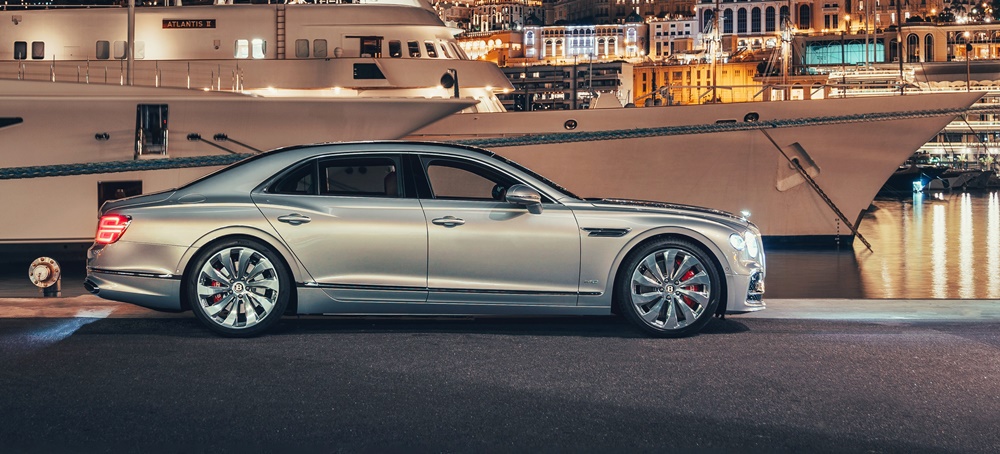
From concept to production reality
“Three-Dimensional Wood is the next interior design element we’ve taken from concept car idea to production reality. It works in perfect harmony with the three-dimensional leather quilting across the cabin of the Flying Spur and creates an even more special environment for those being driven,” explained Bentley’s Head of Interior Design for the Flying Spur, Brett Boydell.
“The principle of milling a geometric three-dimensional diamond form into solid wood was so well received at Geneva, it confirmed the value in translating the concept into reality for the customers of Bentley’s all-new Flying Spur,” he said.
During the past 10 years, the auto industry has been downsizing engines as a way to reduce consumption, toxic exhaust emissions and also weight. Thanks to turbocharging and direct fuel injection, the engine outputs have actually increased in spite of displacements decreasing.
But while most people are happy with smaller, more fuel-efficient engines, Americans still miss the big ones that have been typical in their vehicles, especially the vee engines. Jeep fans, in particular, have been wishing for a V8 Wrangler in recent years, and their request has been noted. The last time a Jeep was offered with a V8 engine was in 1981 when the CJ had a 5-litre V8.
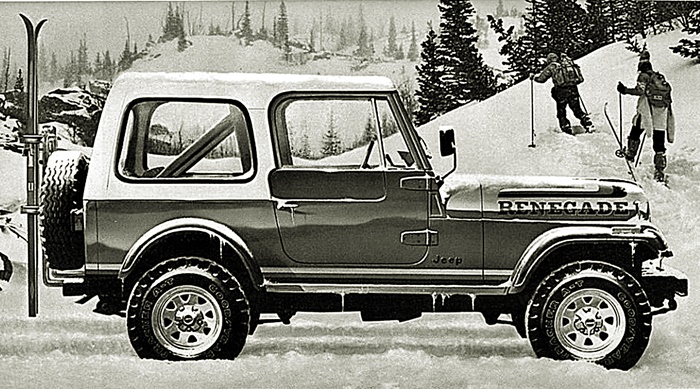
Yes, a V8 is returning
As an indication they may soon get their wish, Jeep has revealed the Wrangler Rubicon 392 Concept. This has a huge 6.4-litre V8 engine that delivers 450 bhp/610 Nm and can go from 0 to 96 km/h in a timed of less than 5 seconds, it is claimed.
“Jeep Wrangler enthusiasts have been asking us for a Wrangler V8, and our new Wrangler Rubicon 392 Concept proves that we have the ability to make that happen,” said Jim Morrison, Head of Jeep Brand – FCA North America. “From the recently introduced Wrangler EcoDiesel, to our award-winning Jeep Gladiator, and the upcoming Wrangler 4xe plug-in hybrid electric vehicle, Jeep is clearly listening to its customers. We are anxious to gauge their reaction to this new Wrangler Rubicon 392 Concept, a vehicle that delivers an incredible and unmatched level of fun-to-drive performance and capability, on- and off-road.”
Capability on and off-road
To accommodate the massive 6.4-litre V8 engine and stronger 8-speed transmission, the Wrangler Rubicon 392 Concept has upgraded engine mounts and a modified frame. Suspension upgrades include new aluminium, monotube Fox shocks for improved damping and heat dissipation. A dual-mode exhaust alters the performance sound at the touch of a button.
The Wrangler Rubicon 392 Concept boasts even more capability courtesy of third-generation Dana 44 axles, a Selec-Track full-time 2-speed transfer case, Tru-Lok electric front and rear-axle locking differentials. 37-inch mud-terrain tyres wrap around custom 17-inch beadlock wheels that hold tyres to rims under extreme lateral loads, allowing for reduced tyre pressure operation and added traction.
The factory-fitted Jeep Performance Parts 2-inch lift kit from Mopar enables additional suspension articulation for improved approach, breakover and departure angles. There are also Rubicon rock rails, steel bumpers with a Warn winch, and a steel belly pan – all to ensure protection when going over the roughest terrain.
Custom design inside and out
The Wrangler Rubicon 392 Concept features Granite Crystal exterior paint adorned with bronze accentuated tow hooks, badging, springs, shocks and wheels, while featuring a heavy-duty raised performance bonnet with an aggressive appearance. Custom half doors and Wrangler’s Sky One-touch powertop, with removable side panels allow for open-air freedom when weather conditions are nice enough.
The vehicle made its appearance just recently and Jeep is doing final real-world testing before launching the production version. It’s not likely to be a long wait as Jeep must be eager to have a new model to prevent Ford’s new Bronco from drawing too many customers.
It seems to be the season for changing brand emblems with some of the global players introducing new or evolved emblems that reflect the digital age. Nissan recently debuted its new brand emblem and now Toyota is doing likewise but is using the new emblem only for Europe, not globally.
Announced by Toyota Motor Europe (TME), the brand emblem and design language are essentially reworked versions of the existing emblem and typography. The intent is to signal a new era for the carmaker as it transitions from a car company to a mobility company.
In describing the changes, TME says that the development has been ’around an ever-diverse customer base coming to the brand for an expanding range of mobility products and services’.
The new design language is ‘fluent’ across all digital and physical touchpoints. The new visual identity is driven by simplification and has been shaped by four key principles: forward-thinking, mobile-ready, more premium feel and ultra- consistent across all business units and sub-brands.
New Brand Visual Identity
At a glance, most people will wonder what the change is as the three ellipses are still in the same arrangement as they have been all along since 1990. But the emblem has a 3-dimensional appearance and the TOYOTA wordmark is usually under it. The new emblem logo for TME distils this into a simple 2-D design, with the wordmark omitted. TME is confident that the emblem itself is sufficiently well-known across Europe by now.


The design is said to communicate simplicity, transparency and modernity. It is especially adapted to the digital space but equally effective in the physical world. It will be applied across all communication touchpoints, while the current emblem will still be used for the vehicles. The current signage at outlets will remain in place and will be reviewed in the context of Toyota 2025 Network Strategy.
New typography
The new visual identity also comes with a new bespoke typography called Toyota Type. This has been multi-purposed for both on-line and off-line environments. It marks a step up in digital readiness as the company expands its online retailing in Europe.
In conjunction with these changes, TME’s different business areas will undergo naming changes. For example, Toyota Insurance Management is now renamed Toyota Insurance Services as its business expands with the growth of connected services and new mobility products. In the used cars area, Toyota Plus now becomes Toyota Approved Used.
“We developed the new brand visual design with ‘tomorrow’ in mind. Our focus was on enabling ever better customer connections allowing them to keep pace with Toyota’s rapid expansion of electrified vehicles, mobility services and online retailing. The design was re-purposed to better connect with customers across a diversity of touchpoints, which they can experience for the first time with the launch New Yaris Hybrid, the all-new 4th generation of our innovative city car,” said Didier Gambart, Vice-President, Sales, Marketing & Customer Experience, Toyota Motor Europe.
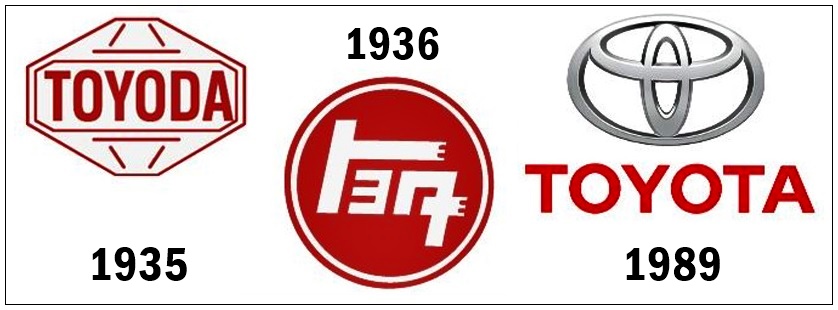
Click here for other news and articles about Toyota.
Even before the all-electric Ford Mustang Mach-E reaches its first customers in America at the end of this year, the carmaker has come out with a ‘special’ to show off its performance. The one-off Mustang is called the Mach-E 1400 and where, in the old days, the ‘1400’ might have referred to the engine size, in this case it refers to the output of 1,400 horsepower.
The prototype can generate that much power with 7 electric motors and not a drop of petrol is needed. The chassis and powertrain work together for a multitude of track set-ups offering capability unlike any other vehicle.
“Now is the perfect time to leverage electric technology, learn from it, and apply it to our line-up,” said Ron Heiser, Chief Program Engineer for the Mustang Mach-E. “Mustang Mach-E is going to be fun to drive, just like every other Mustang before it, but Mustang Mach-E 1400 is completely insane, thanks to the efforts of Ford Performance and RTR.”
The Mustang Mach-E 1400 is the result of 10,000 hours of collaboration by Ford Performance and RTR aimed at bridging the gap between what an electric vehicle can do and what customers tend to believe it can do.
“Getting behind the wheel of this car has completely changed my perspective on what power and torque can be,” said Vaughn Gittin Jr., RTR Vehicles founder, motorsports champion and professional fun-haver. “This experience is like nothing you’ve ever imagined, except for maybe a magnetic roller-coaster.”
The Mustang Mach-E 1400 has taken shape without rules. The Ford design team and RTR used many of the same tools Ford uses for its racing cars and production programs. Aerodynamics are optimized for shape and location, with a focus on cooling ducts, front splitter, dive planes and rear wing.
There are 5 extra electric motors compared to the Mustang Mach-E GT. Three are attached to the front differential and four are attached to the rear in pancake style, with a single driveshaft connecting them to the differentials, which have a huge range of adjustability to set the car up for everything from drifting to high-speed track racing.
“The challenge was controlling the extreme levels of power provided by the 7 motors,” said Mark Rushbrook, Motorsports Director, Ford Performance. “Mustang Mach-E 1400 is a showcase of the art of the possible with an electric vehicle.”
The chassis and powertrain are set up to allow the team to investigate different layouts and their effects on energy consumption and performance, including rear-wheel drive, all-wheel drive and front-wheel drive.
Drift and track setups have completely different front end configurations like control arms and steering changes to allow for extreme steering angles in drifting. Power delivery can be split evenly between front and rear, or completely to one or the other. Downforce is targeted at more than 1,045 kgs at almost 260 km/h.
The 56.8-kWh battery pack contains nickel manganese cobalt pouch cells for ultra-high performance and a high discharge rate. The battery system is designed to be cooled during charging using a di-electric coolant, decreasing the time needed between runs.
An electronic brake booster is integrated to allow series regenerative braking combined with ABS and stability control to optimize the braking system. The Mustang Mach-E 1400 is fitted with Brembo brakes, like the Mustang GT4 racing car, and a hydraulic handbrake system designed for drifting that integrates with the powertrain controls to enable the ability to shut off power to the rear motors.
It is set to debut at a NASCAR race soon and will serve as a test bed for new materials. The bonnet is made of organic composite fibres, a lightweight alternative to the carbonfibre that is used on the rest of the bodywork.
The Ford Mustang is officially sold in Malaysia with full aftersales support and warranty. Visit www.sdacford.com.my to know more.
Ford Mustang is bestselling sportscar in the world – for the fifth consecutive year
If you are driving on PLUS highways in Kedah and Penang and your vehicle has a RFID tag, you can now enjoy faster passage through the toll plazas. From today (Wednesday, July 22). All 9 closed toll plazas from Hutan Kampung all the way to Sungai Dua will open their dedicated toll plaza lanes.
The RFID lanes, which can only be used by privately-registered vehicles, have been available at other toll plazas (open toll system) since the beginning of this year. Those have been at Jitra, Lunas, Kubang Semang, Penang Bridge, Mambau, Lukut, Kempas, Perling, Lima Kedai and Tanjung Kupang.
However, plans by PLUS to roll out across its plazas with 84 closed toll systems (payment based on distance travelled) from April 1 2020 had to be deferred due to COVID-19 pandemic which subjected the country to the Movement Control Order (MCO). Since the implementation of the Recovery MCO, PLUS has resumed its program of RFID implementation.
“Our Northern highway customers can enjoy the convenient, swift and safe RFID experience. Aligned to the Government’s directive to move towards Multi Lane Free Flow (MLFF) toll highway, the introduction of RFID on closed toll system is a next step to make this goal a reality. The RFID technology allows for faster throughput thus reducing congestion at the toll lanes, which is the primary objective for PLUS adopting it,” said Datuk Azman Ismail, Managing Director of PLUS.
“Coincidently, its cashless and contactless transaction not only reduces human interaction at the lanes, but also eliminates the risk of COVID-19 transmission. Linked to an e-wallet as the source of funds, the RFID will reduce cases of insufficient card balances that cause hold up at lane. The ability to top up the e-wallet online helps replenish e-wallet balances regularly and negates the human interactions at toll plaza (for insufficient card balances) that increases the risk of COVID-19 transmission,” he explained.
Datuk Azman Ismail said PLUS anticipates a positive uptake of RFID tags from Penangites, while highway users in Kedah will want to start using the complementary electronic payment system to the SmartTag.
Touch’nGo Sdn Bhd is giving away 1,500 free RFID tags in a limited time only promotion, and PLUS currently offers complimentary RFID tags on a first come-first served basis (and while stocks last) at selected Fitment Centres in Penang and Kedah only. This is in conjunction with the #JomRFID campaign, especially during the Hutan Kampung-Sungai Dua the public pilot program kick-off.

To redeem these complimentary RFID tags, customers are required to register as a PLUSMiles member at jomrfid.plusmiles.com.my. They will then receive a voucher code for redemption. After the full redemption of 1,500 complimentary RFID tags, 15,000 users will be able to receive 500 PLUSMiles reward points when purchasing an RFID tag at RM35 each at the selected Fitment Centres.
PLUS customers now have PUTRI to help them with their enquiries
If the 1,400 bookings for the Honda BR-V that Honda Malaysia has collected within a month of its launch are any indication, Malaysians are not entirely turned off buying new cars. The exemption of sales tax (till the end of 2020) must also be acting as an incentive as there are savings too. For Peninsular Malaysia, prices without insurance range from RM86,726 to RM93,696, depending on the variant and colour choice.
According to Honda Malaysia, over 32,600 units of the BR-V, a 7-seater, have been sold since it entered the Malaysian market in 2017. It was an entirely new model which fit into the slot left by the Freed as a family-carrier.
Of the 1,400 bookings, 42% are from the Central region and over 85% are for the V variant, one of the two variants available. More than 24% of the buyers have specified Modern Steel Metallic, one of the 5 colour choices available. So if you want your BR-V a bit faster, pick another colour or better still, just tell the sales representative you will take any colour although you do have to pay extra for the White Orchid Pearl finish.
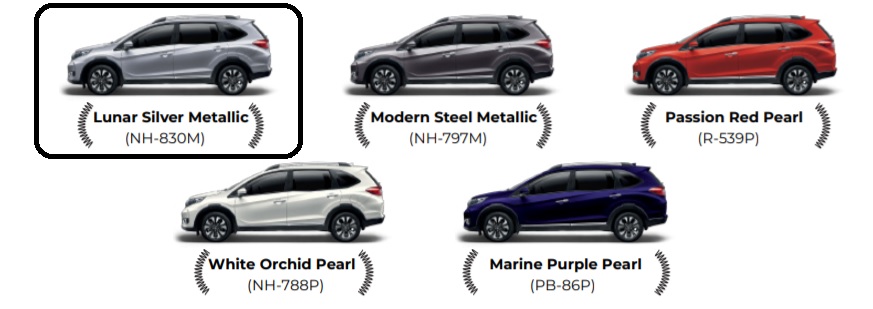
The latest BR-V has received cosmetic updates, typical for a model that is halfway through its cycle. New items include 16-inch dual-tone alloy wheels and a Shark Fin antenna.
It maintains the 1.5-litre SOHC i-VTEC 120 ps/145 Nm engine coupled with a Continuous Variable Transmission (CVT). For the V variant, there are also paddle shifters on the steering wheel to allow manual selection of gears when desired.
In spite of having space for 7 persons, the BR-V also has a lot of cargo space – up to 223 litres, which can be expanded to 539 litres when the third-row seats are folded down. The seating can be folded to create various configurations to suit different needs so it can be used to send the kids to school and then transport plants back from the nursery or furniture from IKEA.
For more information on the BR-V or other Honda models, visit www.honda.com.my. Test-drives are also available at all authorised Honda showrooms nationwide.
Revised Price List for Honda Models, effective from today till December 31, 2020
© Copyright – Piston.my 2024 Trademarks belong to their respective owners. All rights reserved